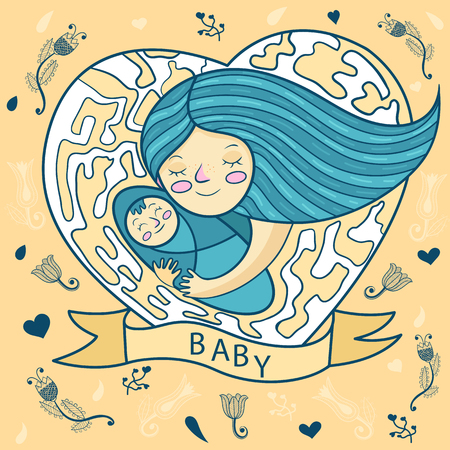Understanding Toddler Self-Control
If you’ve ever watched your toddler try to resist grabbing a cookie before dinner or hold back from throwing a toy in frustration, you’ve seen the first glimpses of self-control in action. At this age, self-control is still a budding skill, and it can look messy and unpredictable. In simple terms, self-control means being able to manage impulses, wait patiently, and make choices that aren’t just about immediate wants. For toddlers, this might mean taking turns with a favorite toy or listening (at least sometimes!) when you say “not right now.”
Self-control is a big deal for young kids because it lays the groundwork for healthy social skills, learning in preschool or daycare, and handling big feelings as they grow. It’s not something that just happens overnight—toddlers are wired to act on impulse! But around ages 2 to 4, their brains start developing the ability to pause, think, and make decisions instead of reacting right away. This natural development is influenced by both biology and experience, so what you do at home truly matters. The good news? With patience and practice, your toddler will get better at self-control over time.
2. Modeling Self-Control in Everyday Life
One of the most powerful ways to teach your toddler self-control is by modeling it yourself. Children learn best by watching the adults around them, especially their parents. When you manage your emotions and handle challenges calmly, your little one is likely to mimic those behaviors. Everyday moments—like waiting in line at the grocery store or dealing with a spilled drink—offer real-life opportunities to demonstrate patience and self-control.
Lead by Example: Your Reactions Matter
Toddlers are quick learners and notice more than we realize. If you get frustrated when stuck in traffic but take a deep breath instead of yelling, your child observes that reaction. Similarly, if you calmly explain why its not okay to have a cookie before dinner, rather than simply saying “no,” you’re showing how to handle disappointment with grace. These small moments add up and help your child understand what self-control looks like in practice.
Practical Scenarios for Modeling Self-Control
| Scenario | Parent’s Reaction | Lesson for Toddler |
|---|---|---|
| Your coffee spills on the floor | You sigh, grab a towel, and say, “Oops! Let’s clean this up together.” | Mistakes happen; stay calm and solve problems together. |
| Your toddler throws a tantrum at bedtime | You stay calm, speak softly, and offer comfort instead of raising your voice. | It’s okay to feel upset; expressing emotions without yelling is possible. |
| Waiting for food at a restaurant | You suggest playing “I Spy” while waiting instead of complaining about the delay. | Patience can be practiced through fun distractions. |
Consistency is Key
No parent is perfect, and everyone loses their cool sometimes. When that happens, it’s okay to apologize and talk about how you wish you’d handled things differently. This honesty not only models self-control but also teaches accountability and growth. Remember, your everyday actions are shaping your child’s ability to manage their impulses now—and for years to come.

3. Establishing Routines and Boundaries
One of the most effective ways to teach your toddler self-control is by creating a daily routine and setting loving, clear boundaries. Children thrive on predictability—knowing what comes next helps them feel safe and secure, which is essential for developing self-discipline. When your toddler understands that bedtime follows bath time or that toys get picked up before dinner, they start to internalize rules and expectations.
Consistency is key here. If you set a rule—like “no snacks before dinner”—stick to it every day. This not only teaches your child about limits but also shows them that you mean what you say. Over time, these simple routines help toddlers manage their impulses because they learn there’s a structure they can rely on.
It’s important to remember that boundaries don’t have to feel harsh. In fact, when boundaries are set with warmth and understanding, children are more likely to cooperate. For example, calmly explaining why it’s important to hold hands in the parking lot (“I want to keep you safe”) helps your child connect rules with care rather than control. This positive approach encourages toddlers to respect limits not out of fear, but because they trust you and want to do the right thing.
Establishing routines and boundaries might take patience at first—toddlers will test limits as part of learning—but sticking with it pays off. Over time, you’ll notice your child becoming more independent and better able to manage their emotions and actions, both at home and in public settings like preschool or playdates.
4. Practical Tips and Activities to Build Self-Control
If you’re looking for ways to help your toddler develop self-control, the good news is that daily life offers countless opportunities. By weaving hands-on strategies, simple games, and everyday moments into your routine, you can gently guide your child as they learn to wait, take turns, and manage those big feelings. Below are some practical tips and activities that fit naturally into American family life—and are easy to start today!
Hands-On Strategies for Everyday Life
| Situation | What You Can Do |
|---|---|
| Waiting in Line (e.g., at the grocery store) | Play “I Spy” or sing a short song together. Praise your child for waiting calmly, even if it’s just for a minute. |
| Meal Time | Ask your toddler to help set the table, then have everyone wait until all are seated before eating. This small pause teaches patience. |
| Getting Ready to Go Out | Let your child choose between two shoes or jackets, but ask them to wait until you count to five before putting them on. |
Simple Games That Build Self-Control
- Red Light, Green Light: This classic game is perfect for practicing impulse control. When you say “red light,” your child has to stop; “green light” means go! Mix up the pace and celebrate their effort to listen and respond.
- Simon Says: Give silly instructions (“Simon says touch your nose!”). Only follow the command if you say “Simon says.” This helps toddlers focus and resist the urge to act impulsively.
- Freeze Dance: Play music and dance together. When the music stops, everyone freezes! It’s a fun way to practice stopping when asked.
Encourage Turn-Taking Every Day
Toddlers aren’t born knowing how to share or take turns—it takes lots of practice! Try these everyday activities:
- Puzzle Time: Take turns adding pieces with your child. Say out loud whose turn it is so they hear the language of sharing.
- Baking Together: Let your toddler pour ingredients after you do one. Talk about “my turn” and “your turn.”
- Playdates: Narrate what’s happening (“It’s Emily’s turn with the truck, then it will be yours”) so your toddler learns what to expect.
Modeling Self-Control Matters Most
Your child learns by watching you! When you show patience—like taking deep breaths when traffic is slow or calmly waiting in line—they see self-control in action. Don’t be afraid to narrate what you’re doing: “I really want my coffee right now, but I’m waiting my turn.” These little moments add up over time.
The Power of Consistency and Encouragement
The key is consistency—practice these skills every day, even in small ways. Celebrate each success with a high-five or a hug. Remember, building self-control is a journey, not a race. With encouragement and repetition, your toddler will grow more confident and capable each week.
5. Handling Meltdowns and Setbacks with Patience
Even the most patient parents will face their toddler’s meltdowns and setbacks on the journey to building self-control. These moments are tough, but they’re also opportunities to show your child how to manage big feelings. Responding with empathy is key. When your toddler is overwhelmed, get down to their eye level, use a calm voice, and acknowledge their feelings: “I see you’re upset because it’s hard to wait.” This simple act of validation helps your child feel seen and understood, which can diffuse some of the frustration.
Gentle discipline works best in these situations. Instead of punishing or raising your voice, set clear boundaries with kindness. For example, if your child throws a toy during a tantrum, calmly explain: “We don’t throw toys because someone could get hurt. Let’s find another way to show you’re angry.” Offering alternatives gives your toddler a sense of control while teaching them appropriate ways to express emotions.
It’s also important to support your child through their frustration rather than trying to fix everything right away. Sometimes, simply being present—offering a comforting hug or sitting quietly beside them—can help your child process their emotions safely. Remember, every meltdown is a learning moment for both you and your toddler.
Setbacks are normal and don’t mean you’re failing as a parent. The goal isn’t perfection—it’s progress. Celebrate small wins together and talk about what happened after everyone has calmed down. You might say, “You were really mad when we had to leave the park, but you used your words instead of screaming this time. I’m proud of you!”
By handling difficult moments with patience and empathy, you teach your toddler that all feelings are okay—and that there are loving ways to work through them together. This approach not only builds self-control but also deepens the trust between you and your child.
6. Encouraging Progress and Celebrating Small Wins
When it comes to teaching your toddler self-control, one of the most powerful tools you have as a parent is positive reinforcement. Kids thrive on encouragement, especially when they’re learning something as challenging as managing their impulses or waiting their turn. Every small step forward deserves recognition—even if it’s just a few extra seconds of patience or using words instead of tears during a meltdown. These moments might seem minor, but they are huge milestones for your little one.
Celebrating these little achievements doesn’t mean extravagant rewards. Simple things like clapping, high-fives, verbal praise (“I’m so proud you waited for your snack!”), or even a special sticker can make a world of difference. This kind of acknowledgment helps toddlers feel seen and valued for their efforts, not just the results. Over time, they start to connect self-control with positive feelings and approval, which motivates them to keep trying.
Consistency is key here—make it a habit to notice progress, no matter how small. You might say, “I saw how you put your toy down gently instead of throwing it—that was awesome!” The goal is to reinforce that practicing self-control is something worth celebrating in itself.
Remember, progress won’t always be linear. There will be setbacks, and that’s okay. What matters most is that your child feels supported along the way. By focusing on growth rather than perfection, you create an environment where your toddler feels safe enough to try, fail, and try again. As parents, our encouragement gives kids the confidence to keep building those all-important self-control skills—one small win at a time.


